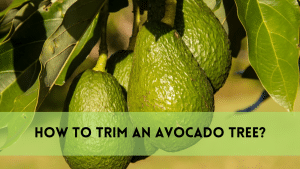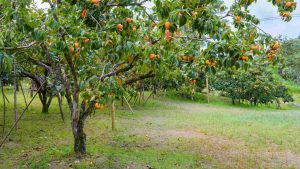Apricot trees (Prunus armeniaca) are not only a welcome addition to any garden or orchard, providing excellent fruits, but they also make lovely decorative trees with their vivid blooms and foliage. Proper apricot tree pruning is essential for maintaining tree health, fostering vigorous development, and assuring a plentiful crop.
This page provides a complete guide on how to trim an apricot tree, including the best techniques, materials required, and the optimal timing for the task.
Why Trim an Apricot Tree?
To trim an apricot tree, it’s important for various reasons.
Promotes Health: Eliminating dead, diseased, or damaged wood reduces the spread of disease and pest infestation.
Encourages Fruit Production: Proper pruning improves fruit quality and quantity by allowing more air circulation and light penetration.
Maintains Shape: Pruning helps to keep the tree’s structure, making it easier to handle and more attractive.
Prevents Overcrowding: Thinning down branches minimises overcrowding, lowers the danger of limb breakage, and promotes overall tree health.
When to Trim an Apricot Trees?
The best time to trim an apricot tree is during their dormant season, which is often late winter to early spring, just before new growth begins. This timing allows the tree to recuperate faster and lowers the chance of illness. Summer pruning is also useful for removing water sprouts and suckers, which can deplete the tree’s vigour.
Tools Required to Trim an Apricot Tree
Pruning Shears: Used to chop tiny branches and twigs.
Loppers: Used to remove thicker branches up to 2 inches in diameter.
Pruning Saw: Used to chop bigger branches.
Gloves will protect your hands from thorns and rough bark.
Disinfectant: Used to sterilise instruments and prevent the transmission of disease.
How to Trim an Apricot Tree
Need to trim a tree, following these steps will help keep it strong. productive and well-maintained.
Step 1: Prepare your tools
Before you begin to trim an apricot tree, make sure you have all of the necessary tools ready and properly maintained. Keep your pruning shears, loppers, and pruning saw clean and sharp. Sharp instruments create cleaner cuts, allowing the tree to recuperate faster.
To avoid disease transmission between trees, disinfect your instruments with a solution of one part bleach and nine parts water. Wearing gloves will keep your hands safe from thorns and rough bark, and a sturdy ladder may be required to reach higher branches.
Step 2: Remove any dead, diseased, or damaged wood
Begin the process to trim an apricot tree by checking the tree for dead, diseased, or damaged branches. If these branches are not removed, they might harm the tree’s health and growth.
Cut these branches off with a clean cut just above the branch collar, which is the swelling area where the branch connects to the trunk or another branch. Removing these damaged branches initially helps to minimise disease spread and lets you focus on shaping the tree’s healthy portions.
Step 3: Thin out overcrowded branches
Identify branches that are crossing, rubbing together, or developing inward toward the tree’s centre. These branches can produce wounds, which serve as entry places for illnesses and pests. Carefully remove these branches to increase air circulation and light penetration throughout the tree.
Thinning out these branches also helps to avoid overpopulation, which can result in limb breakage and poor fruit output.
Step 4: Shape the Tree
After thinning down the congested branches, concentrate on contouring the tree to keep its natural shape and balance. Apricot trees have a spreading morphology that should be preserved.
Remove any vertical or downward-growing branches, as they do not add to the tree’s shape or fruit output. Aim for a balanced structure with evenly spaced branches so that light may reach all areas of the tree.
Step 5: Remove water sprouts and suckers
Water sprouts are robust vertical shoots that originate from the branches, whereas suckers develop from the tree’s base or roots. Both modes of growth use the tree’s vitality and do not provide fruit.
Remove these shoots as soon as they appear by cutting them off at the source. Regular removal of water sprouts and suckers directs the tree’s energy to fruit-bearing branches.
Step 6: Trim Back to a Healthy Bud
When shortening branches, make sure to cut slightly above a healthy bud. Choose buds that face outward from the tree’s heart, encouraging new growth to extend outward rather than within.
Make clean, angled cuts to promote faster healing and keep water from gathering on the cut surface, which can cause rot.
Step 7: Do Not Over-Prune
Avoid the temptation to remove too much of the tree’s canopy in a single year. Excessive pruning might stress the tree and impair its ability to yield fruit. A decent rule of thumb is to cut no more than 20-30% of the tree’s canopy annually.
This guarantees that the tree remains healthy and produces a good amount of fruit.

Trimming Young Apricot Trees
Pruning In the First Year
After planting a young apricot tree, trim it to 24-36 inches above ground. This initial incision fosters the development of strong lateral branches, which will serve as the tree’s skeleton.
Pruning In the Second Year
In the second year, pick three or four well-spaced lateral branches to serve as the primary scaffold branches. Reduce these branches by one-third to encourage additional branching. Remove competing branches and water sprouts to direct the tree’s energy toward building a sturdy framework.
Pruning Throughout the Third Year and Beyond
From the third year on, continue to shape the tree by thinning out crowded branches and removing any that are growing inward. Maintain a balanced construction with an open centre to ensure proper air circulation and light penetration.
Trimming Mature Apricot Trees
Winter Pruning
Winter pruning on mature apricot trees focuses on removing dead, diseased, or damaged wood. Thin out overgrown branches and shape the tree to keep its shape. This trimming stage is critical to the tree’s health and productivity in the upcoming growing season.
Summer Pruning
During the summer, check the tree for water sprouts and suckers and get rid of them right away. This is also an excellent time to trim extremely long branches to keep them from breaking under the weight of the fruit. Summer trimming regulates the tree’s development and focuses its energy on fruit production.
Common Pruning Mistakes to Avoid
Pruning during the wrong season might increase disease susceptibility and lower fruit production. Always prune during the dormant season, or in early spring.
Removing Too Much Wood: Excessive pruning can stress the tree and reduce its ability to yield fruit. To keep trees healthy, remove no more than 20-30% of their canopy each year.
Making Incorrect Cuts: Make your cuts clean and just above the branch collar. Avoid leaving stubs or cutting too close to the trunk, as this might impede healing and cause infection.
Neglecting Young Trees: Properly shaping young trees is critical to their future fruit output. Do not omit pruning in the early years, as it lays the groundwork for a healthy, prolific tree.
FAQs
Can I trim an apricot tree in the fall?
It is generally not advised to trim an apricot tree in the fall. Pruning in late winter to early spring, during the dormant season, is preferable because it allows the tree to heal fast and lowers the chance of infection.
What should I do if my apricot tree has too many little, weak branches?
Thin out the little, weak branches to allow more light and air to enter the tree. Maintain the stronger, well-spaced branches to ensure healthy growth and increased fruit yield.
Do I need to seal the cuts after I trim an apricot tree?
There is no need to seal the cuts after you trim an apricot tree. Healthy apricot trees may heal themselves. Using a sealant can occasionally retain moisture and create more harm than good.
How can I know whether a branch is dead or just dormant?
To see if a branch is dead, scratch a small portion of the bark with your fingernail or a knife. If the tissue beneath is green, the branch is alive. If it is brown and dry, the branch has died and should be removed.
How do I trim an apricot tree that is elderly and neglected?
For older, neglected trees, remove any dead, diseased, or damaged branches. To avoid upsetting the tree, trim out overgrown branches gradually over the course of several years. Prune to restore shape and encourage new growth while removing no more than 20-30% of the canopy yearly.
Conclusion
To trim an apricot tree, it’s vital for maintaining their health, shape, and yield. By using proper pruning techniques and timing, you can help your apricot tree thrive, produce high-quality fruit, and keep its attractive structure.
Whether you have a young sapling or a mature tree, frequent trimming will increase its vitality and durability. Remember to use clean, sharp tools, make careful cuts, and give your tree proper post-pruning care to help it recover and thrive. With these practices, you’ll have a healthy, fruitful apricot tree for years.





